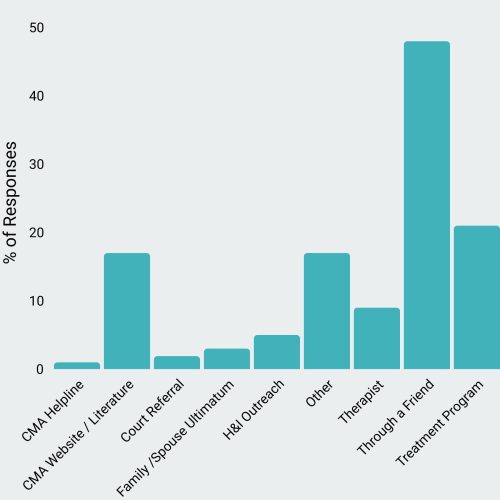
The Crystal Meth Anonymous (CMA) fellowship survey is conducted to gain a deeper understanding of our community and to ensure that we are meeting the needs of our members. By gathering insights from our diverse membership, we aim to identify areas of strength and opportunities for growth within our fellowship. This survey serves as a vital tool in our ongoing efforts to enhance the support and resources we provide to those seeking recovery from crystal meth addiction.
Our primary goals are to foster an inclusive and welcoming environment for all members, regardless of their background or identity, and to ensure that our programs are accessible and effective. By analyzing the data collected, we strive to improve our outreach efforts, refine our support systems, and address any barriers that may hinder members from fully engaging in their recovery journey. Ultimately, this survey helps us to uphold the core principles of CMA, promoting unity, diversity, and healing within our community.
Who Are We?
In 2024, 1828 members responded to the Crystal Meth Anonymous fellowship survey. Responding fellows call 21 different countries and 45 states home. Members span a wide range of ages with a median age of 45 years old. Roughly 78% of members who responded identify as male, 17% as female, 3% as non binary, 1% as transgender, and 1% as another gender identity. Fellows identify across a diverse range of ethnicities and sexual orientations.
Ethnicity
- – 2.8% Asian
- – 5.3% Black or African American
- – 68.1% Caucasian
- – 11.5% Hispanic
- – 0.5% Middle Eastern
- – 4.9% Multi-Racial
- – 2.5% Native American or Indigenous
- – 0.4% Native Hawaiian or other Pacific Islander
- – 2.1% Other Ethnicity
Sexual Orientation
- – 2.3% Asexual
- – 6.6% Bisexual
- – 60.2% Gay
- – 20.9% Heterosexual or Straight
- – 1.0% Lesbian
- – 3.7% Pansexual
- – 3.7% Queer
- – 1.4% Other orientation
Most participants (55%) who completed the survey have under 2 years of clean time. 28% of those responding have six years or more. When it comes to relapse, 74% of fellows report that it is a part of their stories.

Introduction to CMA
When asked how they were introduced to CMA, fellows cite a number of sources with a referral through friends topping the list. Treatment programs and the CMA website and literature also reached nearly 20% of fellows each, a clear sign that efforts engaging with hospitals & institutions and expanding public information and outreach are having positive effects.
The vast majority of fellows (95%) report being either welcomed or very welcomed in their first meeting. There is still room to grow, both by decreasing the fraction that did not feel welcomed and growing the numbers that feel very welcomed.


Experience in Recovery
CMA is broadly a multi-fellowship community with four out of five fellows attending meetings in other Twelve Step programs in addition to CMA. 77% of fellows attend two or more meetings a week, with one in three attending daily meetings.
Nearly every facet of life is negatively impacted by our drug use. Fellows report that the areas of life which were negatively impacted by their drug use are now showing positive benefits due to their recovery.


Hospitals and Institutions
Roughly two out of three fellows have participated in a residential treatment program or rehab. Of these, 55% report not having access to CMA meetings as part of their treatment program. One in three members report having previously been incarcerated. About half of these report having no access to Twelve Step meetings while incarcerated.
It’s clear that efforts from H&I initiatives are making great progress at sharing the message to addicts in treatment and incarceration, but there is still room to grow.
Diversity, Equity, & Inclusion
When asked “Do you feel that CMA is diverse, equitable, and inclusive in your State or Region?”, one in five fellows report that they did not feel that CMA is a diverse, inclusive, or equitable community.

This sentiment is seen most prominently among members of color, those identifying as heterosexual/straight males, and those who identify as transgender or non-binary.
When asked why fellows felt that CMA is not diverse, equitable, or inclusive, we saw some common themes of lack of representation, incidents of exclusivity, and bias.
Past Publications
Below, we have included the full results from this survey and previous years’ surveys.
(855) METH-FREE ••• (855) 638-4373
